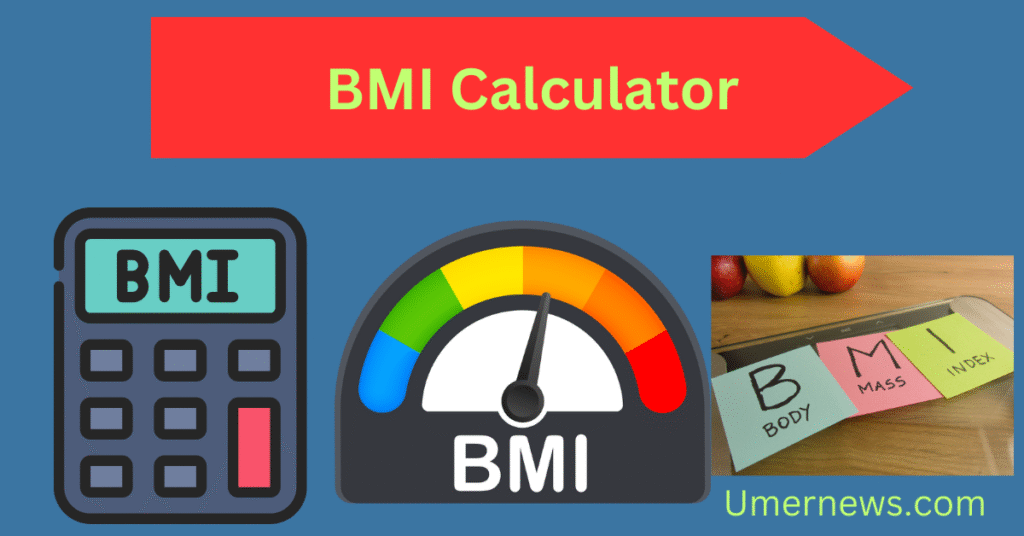BMI Calculator
Contents
- 1 BMI Calculator — Metric & Imperial
- 2 The Ultimate BMI Calculator Guide: What Your Numbers Really Mean
BMI Calculator

BMI Calculator — Metric & Imperial
Calculate your Body Mass Index quickly and easily. Switch between Metric and Imperial units for convenience.
Your BMI is:
BMI is a general guideline. Always consult a healthcare professional for personalized advice.
The Ultimate BMI Calculator Guide: What Your Numbers Really Mean
The Body Mass Index (BMI) calculator is a tool you’ve likely encountered before, but do you truly understand what the results mean for your health? This calculation is a simple yet powerful way to gauge your body’s leanness or corpulence based on your height and weight. It’s often the first step in determining whether your weight falls into a healthy range, or if it might be time to consider making some changes. While a BMI of 20.1 kg/m² might look like just a number, it places you squarely in the “Normal” category. This article will break down what BMI is, how it’s calculated, and what the results really tell you about your health. We’ll also explore the limitations of BMI and other important metrics to consider, so you can get a complete picture of your body’s health.
What is BMI and Why is It Important?
BMI is a measurement of a person’s tissue mass, used to indicate if they have a healthy body weight for their height. The value from the BMI calculator is used to place a person into a specific weight category: Underweight, Normal, Overweight, or Obese. These categories, which can vary slightly by region and age, are a useful general indicator. Being on either end of the spectrum—overweight or underweight—can have significant health effects, making BMI a valuable starting point for any health assessment.
BMI Ranges for Adults
The World Health Organization (WHO) provides clear guidelines for adults aged 20 or older, regardless of gender.
| Classification | BMI Range (kg/m²) |
|---|---|
| Severe Thinness | < 16 |
| Moderate Thinness | 16–17 |
| Mild Thinness | 17–18.5 |
| Normal | 18.5–25 |
| Overweight | 25–30 |
| Obese Class I | 30–35 |
| Obese Class II | 35–40 |
| Obese Class III | > 40 |
BMI for Children and Teens
For those between the ages of 2 and 20, the Centers for Disease Control and Prevention (CDC) uses percentiles instead of fixed BMI values, as a child’s body composition changes with age.
- Underweight: Less than the 5th percentile
- Healthy weight: 5th to 85th percentile
- At risk of overweight: 85th to 95th percentile
- Overweight: Greater than the 95th percentile
The Health Risks of Being Overweight or Underweight
Understanding the health risks associated with your weight is crucial. Maintaining a healthy weight range is vital for long-term well-being.
Risks of Being Overweight
Carrying too much weight can significantly increase your risk of various serious health conditions, including:
- High blood pressure and cholesterol
- Type 2 diabetes and coronary heart disease
- Stroke and gallbladder disease
- Osteoarthritis and sleep apnea
- Certain cancers (endometrial, breast, colon, kidney, gallbladder, and liver)
Risks of Being Underweight
Being underweight also poses its own set of dangers, which are often overlooked. These can include:
- Malnutrition and vitamin deficiencies
- Osteoporosis (bone weakness)
- Decreased immune function
- Reproductive issues for women, including hormonal imbalances and a higher chance of miscarriage
The Limitations of BMI: What the Calculation Doesn’t Tell You
While the BMI calculator is a great starting point, it’s not a flawless measure. BMI is an estimate of excess body weight, not excess body fat, and it doesn’t account for crucial factors like muscle mass, bone density, or fat distribution. For this reason, it’s essential to consider it alongside other measurements.
- Older adults often have more body fat than younger adults with the same BMI.
- Women typically have more body fat than men for an equivalent BMI.
- Athletes and bodybuilders may have a high BMI due to a large amount of muscle, which is denser than fat. A muscular individual with a high BMI can still be considered healthy.
For these reasons, a doctor’s consultation is always the best way to determine your overall health status.
Beyond the Basics: Ponderal Index and BMI Prime
Beyond the standard BMI calculation, there are other metrics you might encounter. The Ponderal Index (PI) and BMI Prime offer alternative ways to assess body composition.
- Ponderal Index (PI): This index uses the cube of a person’s height instead of the square, making it a more reliable measure for very tall or very short individuals where BMI might be skewed.
- BMI Prime: This is a ratio of your BMI to the upper limit of the “normal” range (25 kg/m²). A value less than 0.74 is considered underweight, while a value greater than 1 is overweight. This provides a quick way to see how far you are from the normal range.
For example, a person with a BMI of 20.1 kg/m² would have a BMI Prime of $20.1 \div 25 = 0.804$, which falls within the normal range of 0.74 to 1.
Frequently Asked Questions
What is a healthy BMI range?
The healthy BMI range for adults is between 18.5 kg/m² and 25 kg/m². Maintaining your weight within this range is generally associated with a lower risk of health issues.
How is BMI calculated?
BMI is calculated using a simple formula: your weight divided by your height squared. The most common formulas are:
- Metric Units: $BMI = \frac{\text{mass (kg)}}{\text{height}^2 (\text{m})}$
- US Units: $BMI = 703 \times \frac{\text{mass (lbs)}}{\text{height}^2 (\text{in})}$
Is a high BMI always bad?
No. While a high BMI can indicate a health risk, it’s not always a definitive sign of poor health. Athletes and individuals with a lot of muscle mass can have a high BMI without having excess body fat.
What are the limitations of a BMI calculator?
A BMI calculator does not account for muscle mass, bone density, or fat distribution. It’s a general tool and should not be the only factor in assessing your health.
What is the Ponderal Index?
The Ponderal Index (PI) is a body mass index that uses height cubed instead of squared. It is considered more accurate than BMI for extremely tall or short individuals.
What is BMI Prime?
BMI Prime is a ratio of your BMI to the upper limit of the normal range (25). It gives you a quick visual of how your BMI compares to the healthy standard.
Should I consult a doctor about my BMI?
Yes, absolutely. A BMI calculator is a great starting point, but a healthcare professional can provide a comprehensive assessment of your health, taking into account factors like body composition, lifestyle, and medical history.
Conclusion
The BMI calculator is a fundamental tool for understanding your health and weight. It provides a quick and accessible way to see where you stand in relation to established health categories, such as normal, overweight, or underweight. However, it’s vital to remember its limitations and use it as a starting point for a conversation with your doctor, not as the final word on your health. By understanding what your numbers mean and considering a holistic view of your body, you can take meaningful steps toward a healthier you.
What’s your take on BMI? Do you find it to be a useful tool, or do you prefer other methods for assessing health? Share your thoughts in the comments below!


